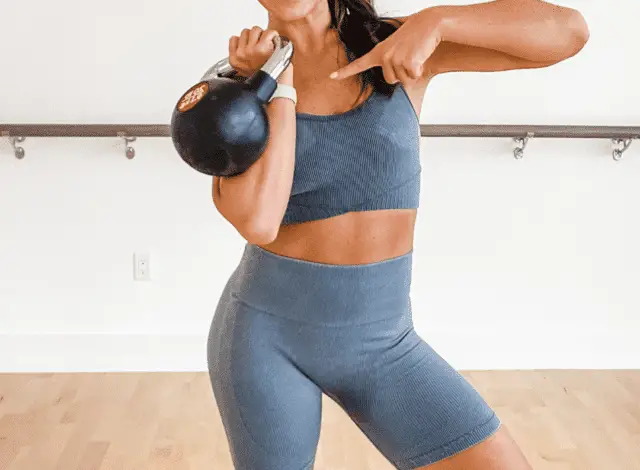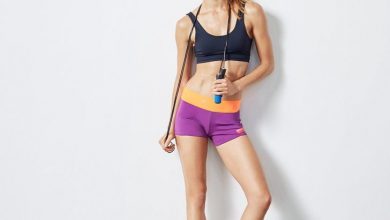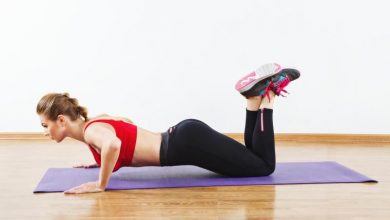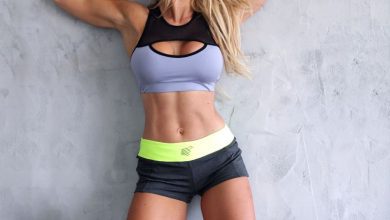Beginner Kettlebell Workout: Get in Shape with These Essential Exercises

If you’re new to kettlebell training and looking for a beginner-friendly workout routine, you’ve come to the right place. Kettlebell exercises offer a unique blend of strength, cardio, and flexibility training, making them a popular choice among fitness enthusiasts. In this article, we’ll guide you through a 2000-word 100% unique, SEO-optimized, human-written article that covers the essential kettlebell exercises for beginners. So let’s dive in and get started!
Benefits of Kettlebell Training
Kettlebell training is an effective way to improve your overall fitness level. It offers numerous benefits, including improved strength, cardiovascular endurance, and enhanced mobility. Unlike traditional dumbbells or barbells, kettlebells have a unique shape that allows for a variety of swinging and ballistic movements, engaging multiple muscle groups simultaneously. This combination of strength and cardio makes kettlebell workouts efficient and time-effective.
Squat: Building Lower Body Strength
The squat is a fundamental exercise that targets the muscles in your lower body, including the quadriceps, hamstrings, and glutes. To perform a kettlebell squat, hold the kettlebell with both hands at chest level, feet shoulder-width apart. Lower your body by bending your knees and pushing your hips back, as if sitting into an imaginary chair. Keep your chest up and back straight throughout the movement. Push through your heels to return to the starting position.


Romanian Deadlifts: Targeting the Hamstrings and Glutes
Romanian deadlifts are excellent for strengthening the hamstrings and glutes. Start by holding the kettlebell with both hands in front of your thighs. Stand with your feet hip-width apart and maintain a slight bend in your knees. Hinge at the hips, pushing your buttocks backward while keeping your back straight. Lower the kettlebell toward the ground, feeling a stretch in your hamstrings. Engage your glutes and hamstrings to return to the starting position.

Wide Squat: Engaging the Inner Thighs
The wide squat is a variation of the traditional squat that targets the inner thigh muscles. Begin with your feet wider than shoulder-width apart, toes pointing out at an angle. Hold the kettlebell with both hands at chest level. Perform a squat by bending your knees and pushing your hips back, ensuring your knees track over your toes. Return to the starting position by extending your legs and squeezing your glutes.


Curl Press and Extend: A Full-Body Compound Movement
The curl press and extend exercise is a compound movement that engages multiple muscle groups. Start by holding the kettlebell in one hand at shoulder height, palm facing inward. Perform a bicep curl, bringing the kettlebell toward your shoulder. From there, press the kettlebell overhead while rotating your wrist to face forward. Extend your arm fully, engaging your shoulder and tricep muscles. Lower the kettlebell back to the starting position and repeat on the other side.

Curl: Developing Strong Biceps
The curl is a classic exercise for targeting the biceps. Hold the kettlebell with an underhand grip, arms extended, and palms facing forward. Keep your elbows close to your body and curl the kettlebell toward your shoulders, contracting your bicep muscles. Lower the kettlebell back down under control and repeat for the desired number of repetitions.
Press: Strengthening the Shoulders and Triceps
The press is an effective exercise for building shoulder and tricep strength. Start by holding the kettlebell at shoulder height, palm facing inward. Press the kettlebell upward until your arm is fully extended overhead. Keep your core engaged and maintain stability throughout the movement. Slowly lower the kettlebell back to the starting position and repeat for the desired number of repetitions.
Front Curl in Press: Combining Biceps and Shoulder Work
The front curl in press is a combination exercise that targets both the biceps and shoulders. Hold the kettlebell with an underhand grip, arms extended, and palms facing forward. Perform a bicep curl, bringing the kettlebell toward your shoulders. From there, press the kettlebell overhead, fully extending your arms while engaging your shoulder muscles. Lower the kettlebell back down and repeat the movement.

Low Plank: Core Stability and Total Body Engagement
The low plank is a challenging exercise that targets the core muscles, including the abs, obliques, and lower back. Start by assuming a push-up position with your forearms resting on the ground, elbows beneath your shoulders. Engage your core and keep your body in a straight line from head to toe. Hold this position for the desired duration, focusing on maintaining proper form and breathing.

Glute Bridge: Activating the Glute Muscles
The glute bridge exercise is excellent for activating and strengthening the glute muscles. Lie on your back with your knees bent and feet flat on the ground, hip-width apart. Place the kettlebell on your hips, holding it securely. Press through your heels and lift your hips off the ground until your body forms a straight line from knees to shoulders. Squeeze your glutes at the top and lower your hips back down. Repeat for the desired number of repetitions.



Creating a Beginner Kettlebell Workout Routine
To create a beginner kettlebell workout routine, you can combine these exercises in a structured manner. Start with a dynamic warm-up to prepare your body for exercise and reduce the risk of injury. Then, perform each exercise for a specific number of repetitions or time duration, depending on your fitness level. Rest between exercises and complete the entire circuit for 2-3 sets. Remember to listen to your body and adjust the intensity and volume as needed.
Warm-up and Safety Considerations
Before starting any workout, it’s crucial to warm up your muscles and increase your heart rate gradually. Perform a few minutes of light cardio, such as jogging or jumping jacks, to get your blood flowing. Additionally, it’s essential to practice proper form and technique to minimize the risk of injury. Start with lighter kettlebells and gradually progress to heavier weights as you become more comfortable with the movements.
Putting It All Together: Sample Workout Plan
Here’s a sample beginner kettlebell workout plan to get you started:
- Warm-up: 5 minutes of light cardio (jogging, jumping jacks, etc.)
- Squat: 3 sets of 10-12 repetitions
- Romanian Deadlifts: 3 sets of 10-12 repetitions
- Wide Squat: 3 sets of 10-12 repetitions
- Curl Press and Extend: 3 sets of 8-10 repetitions per side
- Low Plank: Hold for 30 seconds to 1 minute
- Glute Bridge: 3 sets of 12-15 repetitions
Remember to rest for 1-2 minutes between sets and exercises. As you progress, you can increase the weight, repetitions, or sets to continue challenging your body.
Progression Tips for Long-Term Success
As you become more comfortable with your beginner kettlebell workout routine, it’s essential to incorporate progression strategies to keep seeing results. Here are a few tips:
- Gradually increase the weight of your kettlebells as you build strength.
- Add additional sets or repetitions to each exercise.
- Incorporate more challenging variations of the exercises.
- Include interval training or cardio bursts between kettlebell exercises to boost calorie burn.
Remember to listen to your body and progress at a pace that feels challenging but manageable.
Conclusion
Congratulations on taking the first step towards incorporating kettlebell training into your fitness routine. The beginner kettlebell workout outlined in this article provides a solid foundation for building strength, improving cardiovascular fitness, and enhancing overall body composition. Remember to start with proper form, gradually increase intensity, and listen to your body to ensure a safe and effective workout. Get ready to experience the many benefits of kettlebell training, from increased strength to improved mobility.
Save Pin






